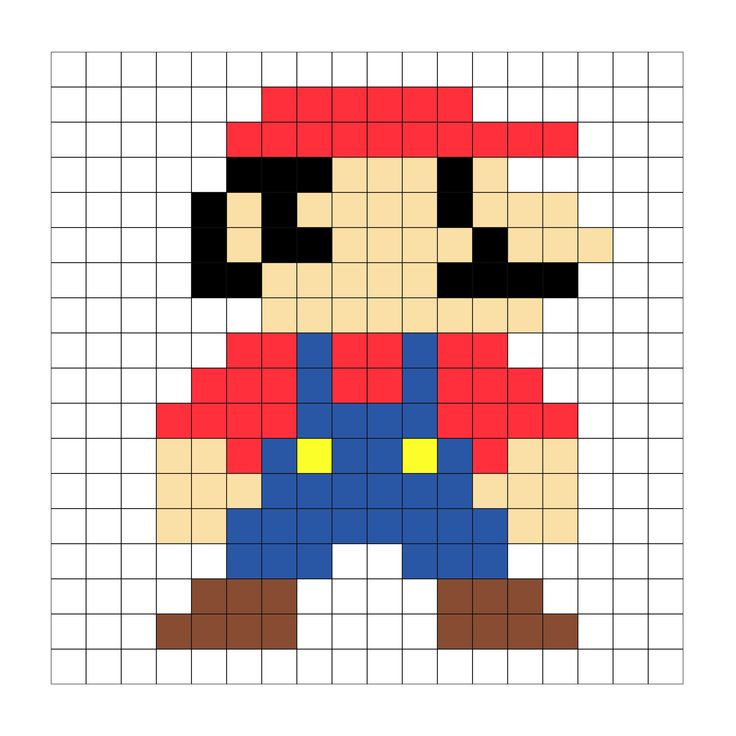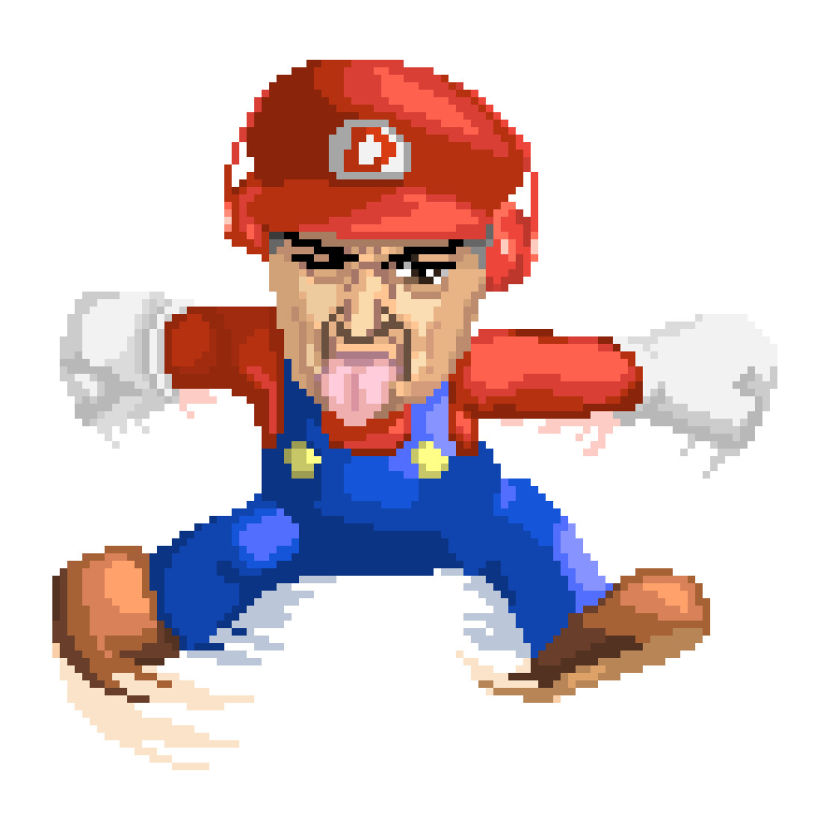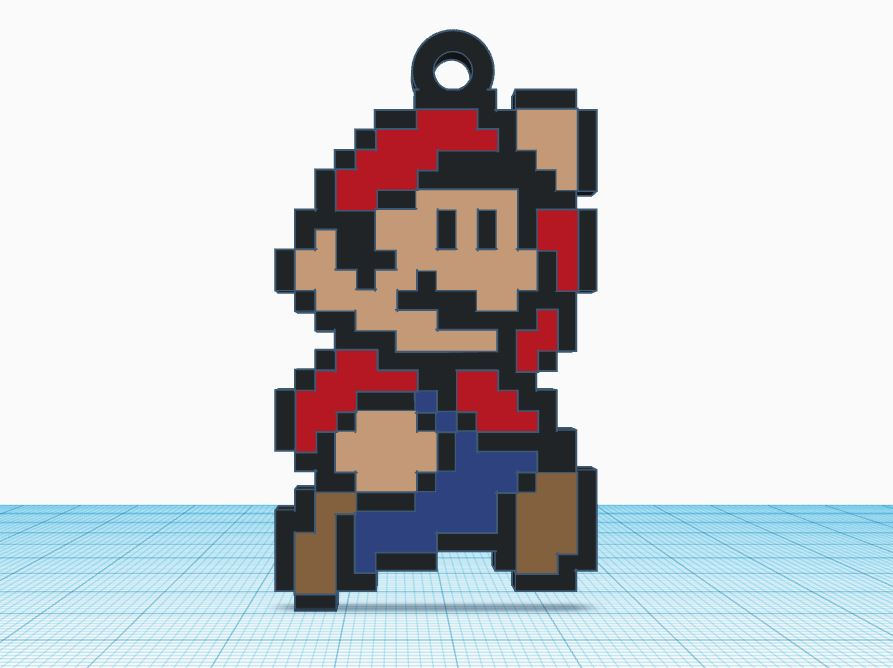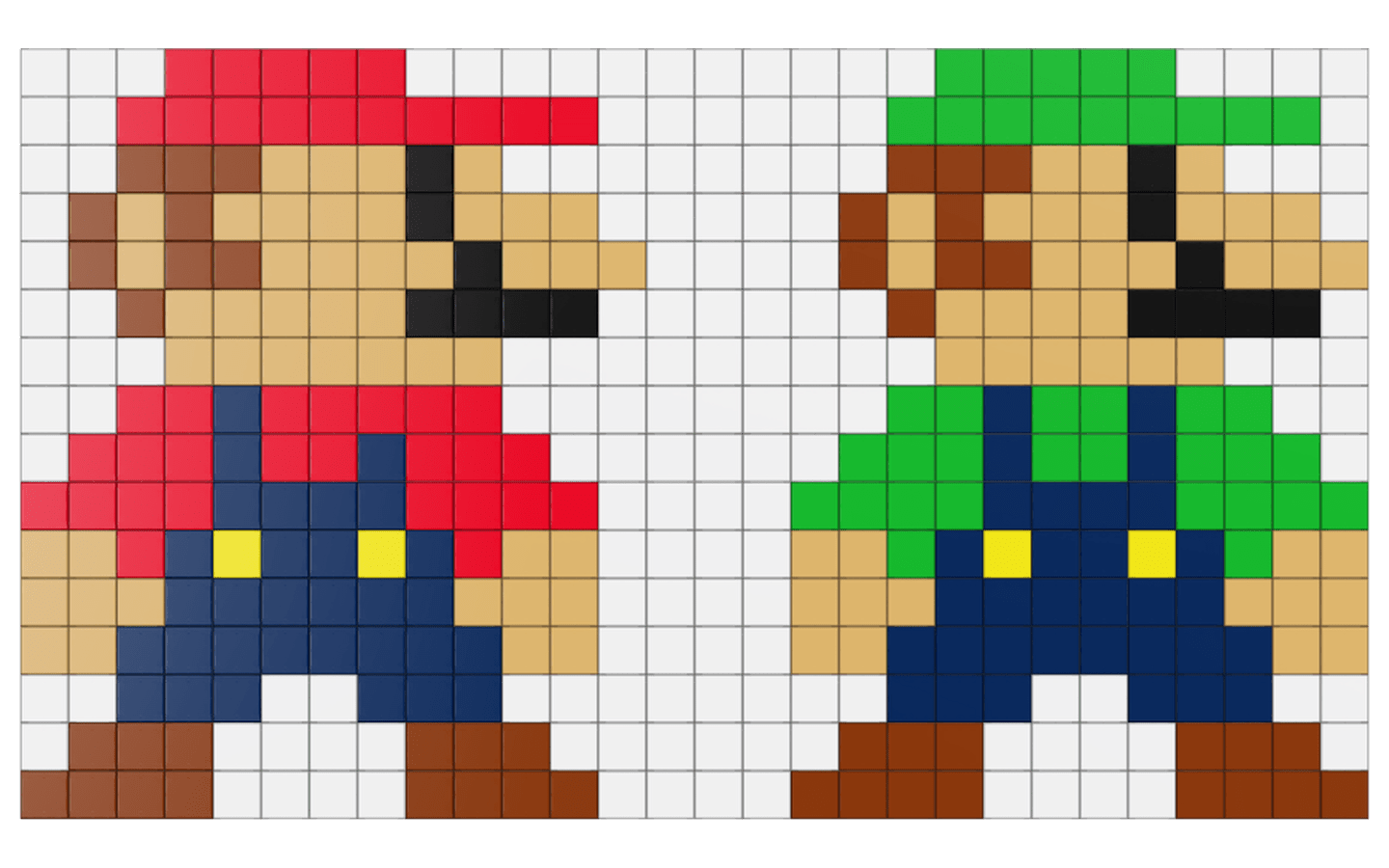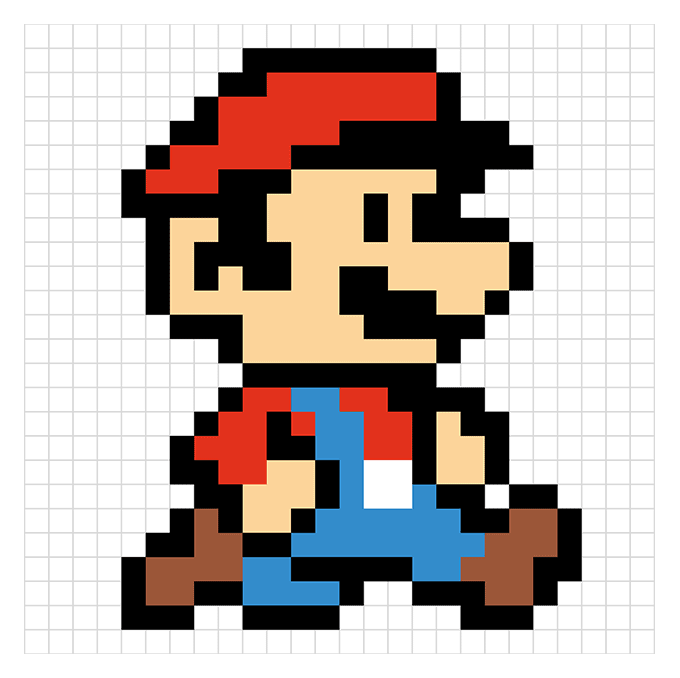A Pixel-Perfect Icon: The Birth of Mario Pixel Art
In the realm of video game history, few characters have left as indelible a mark as Mario, the iconic mustachioed hero created by Nintendo. His journey from humble beginnings in 1985’s “Super Mario Bros.” to global superstardom is intrinsically linked to the art form that brought him to life: pixel art. This article delves into the evolution and impact of Mario pixel art, exploring its origins, artistic innovations, and lasting influence on the gaming industry.
The Genesis of Mario’s Pixelated Persona
Mario’s pixelated persona was born in an era when hardware limitations necessitated creative solutions to convey character, environment, and action within a constrained digital space. The original “Mario Bros.” arcade game (1983) laid the groundwork for his visual identity, but it was the groundbreaking “Super Mario Bros.” for the Nintendo Entertainment System (NES) that solidified Mario as a pixel art icon.
Developed by Shigeru Miyamoto and his team, they skillfully employed the NES’s 8-bit graphics capabilities to craft a vibrant world inhabited by distinctive, easily recognizable characters. Mario himself, with his red cap, blue overalls, and signature mustache, was designed using a mere 16×16 pixel grid. Despite this minimalism, the careful selection of colors, shapes, and animations imbued him with an expressive personality that resonated with players worldwide.
Advancements in Technology: From 8-Bit to High-Definition Pixels
The journey of visual technology, from the humble 8-bit graphics to the stunning high-definition pixels we enjoy today, is a testament to the relentless pursuit of realism and immersion in digital media. This evolution not only transformed the gaming industry but also revolutionized fields like cinema, television, and virtual reality. Here’s a brief overview of this remarkable progression.
8-Bit Era (Late 1970s – Early 1990s)
The 8-bit era marked the dawn of mainstream video gaming. Systems like the Atari 2600, Nintendo Entertainment System (NES), and Sega Master System used processors capable of handling 8 bits of data at once. In terms of graphics, this translated to a limited color palette (often around 50 colors) and simple, blocky shapes. Sprites, small bitmap images representing characters or objects, were commonly used due to memory constraints. Pixel art was born, with artists skillfully crafting intricate designs within these limitations. Despite their simplicity, 8-bit games like “Super Mario Bros.” and “The Legend of Zelda” captivated audiences and laid the foundation for future advancements.
16-Bit Era (Mid 1980s – Mid 1990s)
With the arrival of systems like the Super Nintendo Entertainment System (SNES), Sega Genesis, and TurboGrafx-16, 16-bit graphics significantly improved visual fidelity. The increased bit depth allowed for a broader color range (up to thousands of colors) and more detailed sprites. Background layers became possible, enabling parallax scrolling for enhanced depth perception. Games like “Donkey Kong Country,” which utilized pre-rendered 3D graphics, pushed the boundaries of what 16-bit hardware could achieve, providing a glimpse into the future of gaming graphics.
32/64-Bit Era (Early 1990s – Late 1990s)
Systems like the Sony PlayStation, Sega Saturn, and Nintendo 64 ushered in the age of 3D polygonal graphics. These consoles could render complex 3D environments, characters, and objects, allowing for fully immersive game worlds. Texture mapping added detail to surfaces, while anti-aliasing helped smooth out jagged edges. Games like “Final Fantasy VII,” “Tomb Raider,” and “Super Mario 64” showcased the potential of 3D gaming and set new standards for storytelling and gameplay.
Transition to HD (Late 1990s – Present)
The advent of high-definition television (HDTV) and subsequent gaming consoles like the Xbox 360, PlayStation 3, and Wii marked a significant leap in graphical quality. These systems supported resolutions up to 1080p (1920×1080 pixels), offering crisp, detailed visuals. Advancements in shaders, normal mapping, and lighting techniques created realistic material properties, reflections, and shadows. Games like “Halo 3,” “Uncharted 2,” and “The Legend of Zelda: Twilight Princess” demonstrated the power of HD graphics to immerse players in lifelike environments.
Current Generation and Beyond (Late 2000s – Present)
Today’s consoles, such as the PlayStation 5, Xbox Series X|S, and high-end PC gaming rigs, boast even more impressive capabilities. 4K resolution (3840×2160 pixels) is now standard, with some systems supporting 8K (7680×4320 pixels). Ray tracing, a technique that simulates the behavior of light in real-time, has been introduced, bringing unprecedented levels of photorealism. HDR (High Dynamic Range) enhances contrast and color accuracy, while technologies like DLSS (Deep Learning Super Sampling) and FSR (FidelityFX Super Resolution) use AI to boost performance while maintaining visual quality. Titles like “Red Dead Redemption 2,” “Horizon Zero Dawn,” and “Cyberpunk 2077” showcase the pinnacle of modern gaming graphics.
Beyond gaming, these advancements have also transformed other industries:
- Cinema and Television: High-definition cameras and digital post-processing techniques have enabled filmmakers to create visually stunning movies and TV shows. CGI (Computer-Generated Imagery) has become ubiquitous, seamlessly integrating with live-action footage.
- Virtual Reality (VR) and Augmented Reality (AR): High-resolution displays and advanced rendering techniques provide immersive experiences in VR and AR applications, ranging from gaming to education, training, and design.
The Artistry and Techniques Behind Mario Pixel Art
Mario pixel art is not merely a product of technical constraints but a testament to the artistic ingenuity of its creators. Key techniques and principles employed in its creation include:
Color Theory and Contrast
Mario’s iconic color scheme—red cap, blue overalls, brown hair, and white gloves—is instantly recognizable due to its effective use of high contrast. Limited palettes forced artists to choose colors judiciously, resulting in bold, visually striking designs that popped against backgrounds and stood out even on low-resolution screens.
Economical Shape Design
Pixel artists designing Mario and his foes had to convey complexity and detail using minimal pixel counts. They achieved this through efficient shape design, distilling forms down to their most essential elements while preserving recognizability and expressiveness. For instance, Mario’s mustache serves both as a distinctive feature and a way to suggest facial expressions without resorting to intricate facial animations.
Animation and Movement
Smooth, fluid animations are crucial to Mario’s charm and gameplay. Pixel artists carefully choreographed his movements—running, jumping, and stomping—within the constraints of limited frame rates and sprite sizes. Subtle variations in poses and timing added depth and personality to these animations, enhancing the overall gameplay experience.
Mario Pixel Art’s Enduring Legacy and Influence
Despite the advent of high-definition graphics and photorealistic rendering, Mario pixel art continues to captivate audiences and inspire artists. Its timeless appeal can be attributed to several factors:
Nostalgia and Retro Aesthetics
Mario’s pixelated appearance is deeply rooted in the collective gaming consciousness, evoking nostalgia for the golden age of video games. The resurgence of retro-inspired indie titles and pixel art aesthetics in contemporary games is a testament to the enduring appeal of Mario’s early pixelated adventures.
Accessibility and Universality
The simplicity and clarity of Mario pixel art make it easily accessible and understandable across cultures and age groups. Its iconic designs transcend linguistic barriers, allowing players worldwide to connect with the characters and story without reliance on complex visuals or text.
Artistic Inspiration and Education
Mario pixel art serves as a rich source of inspiration for aspiring artists, particularly those interested in pixel art and game development. Studying the design choices, color usage, and animation techniques behind Mario’s pixelated world offers invaluable lessons in efficient communication of ideas and emotions within restricted visual confines.
Conclusion
Mario pixel art stands as a shining example of how creative constraints can breed artistic innovation and lasting impact. From its humble 8-bit origins to its continued influence on modern game design, Mario’s pixelated persona embodies the essence of efficient, expressive, and universally appealing visual storytelling. As technology continues to advance, Mario’s pixel art legacy will undoubtedly endure as a cherished reminder of gaming’s past and a guiding light for its future.
